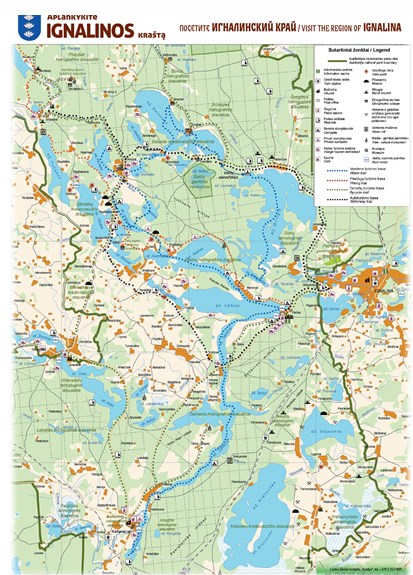Ignalina. Winter route

Ignalina is associated with two words: relaxation and quietness. It is a land of lakes and forests. Beautiful places of the region attracts people who love natural nature, fishing, water entertainment, boat and cycling tours, winter sports, quite rest in rural homestead. It is difficult to imagine a day without fish that you caught on your own in the lake, doesn‘t matter how big it is. Let‘s have a tour around Ignalina region with a multitude of lakes.


Picture by Edmundas Kilkus
Briefly about the history of the region...
Fishing in the Ignalina region is one of the oldest and one of the most important undertakings of the locals, from generation to generation, who lived and currently live near lakes. Many of those who lived near lakes used to fish for their livelihood. This is evidenced by archeological excavations. Bone harpoon was a popular fishing gear of those days. The oldest fishing gears that can be found in Aukstaitija National Park and Labanoras Regional Park were made in the Middle Stone Age or during Mesolithic period (the 8th - 5th millennium BC). It is known that the residents of Kretuonas lake surroundings used to fish with harpoons, fishing nets made of linden and fir splint; archery fishing was popular too. Sinkers of fishing nets were found in the ancient settlements of Kretuonas lake surroundings. During winter time or famine fishing used to be the only source of livelihood. The following fishing tools were popular among the locals: wooden barriers of brooks, slapsticks, fishing nets, pods, harpoons, bows, javelins, fishing rods. Remains of pods were found in the ancient settlements near lake Kretuonas. Slapsticks were used in order to make fish swim into the pods. Sinkers and pods (made of pine bark) prove the fact that fishing nets were used during the Neolithic period. Skiffs were used for fishing. Poles and paddles were used for skiffs rowing.
More information here













